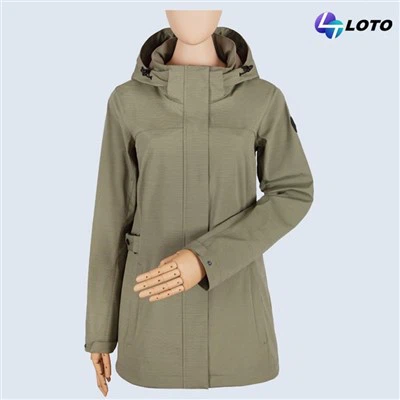Introduction: When preparing for a hike, choosing the right attire is crucial for a comfortable and safe experience. While ski jackets are designed to keep you warm and protected on the slopes, are they suitable for hiking adventures? In this article, we will explore whether people typically wear ski jackets for hiking and offer insights into the ideal attire for your hiking excursions.

Ski Jackets vs. Hiking Jackets:
Ski Jackets:
Ski jackets are purpose-built for cold and snowy conditions encountered during skiing and snow sports. They are known for their excellent insulation, waterproofing, and windproofing properties, which are essential for staying warm and dry on the slopes. Ski jackets often feature:
Thick insulation for retaining body heat in frigid temperatures.
Advanced waterproof and windproof materials to shield against snow and cold winds.
Snow-specific features such as powder skirts, pass pockets, and helmet-compatible hoods.
Hiking Jackets:
Hiking jackets, on the other hand, are designed to cater to the diverse conditions hikers encounter. They prioritize breathability and versatility over heavy insulation and may include:
Lightweight and breathable materials to prevent overheating during strenuous hikes.
Adjustable hoods and venting options for adapting to changing weather.
Pockets and features geared toward carrying essentials like maps, snacks, and water bottles.

Do People Wear Ski Jackets for Hikes?
In general, people do not typically wear ski jackets for traditional hiking activities. The key reasons are:
Overheating: Ski jackets are optimized for extreme cold, which can lead to overheating during hikes, especially in milder or non-winter conditions.
Bulkiness: Ski jackets are often bulkier due to their insulation, making them less comfortable for activities that require a wide range of motion, like hiking.
Lack of Versatility: Ski jackets may lack the versatility required for hiking, such as ventilation options and pocket configurations.
Ideal Attire for Hiking:
For hiking adventures, it's advisable to choose attire specifically designed for the activity. Here's what you should consider:
Hiking Jackets: Opt for lightweight, breathable hiking jackets designed to provide protection from rain, wind, and moderate cold without the excess insulation of ski jackets.
Layering: Dress in layers to adapt to changing weather conditions. A moisture-wicking base layer, insulating mid-layer, and a weather-resistant outer layer (hiking jacket) can provide versatility and comfort.
Comfortable Pants: Choose comfortable, moisture-wicking, and quick-drying hiking pants or leggings for ease of movement.
Proper Footwear: Wear appropriate hiking boots or shoes with good traction for various terrains.
Accessories: Don't forget essentials like a hat, sunglasses, gloves, and sunscreen to protect against the elements.
Conclusion: While ski jackets excel in cold and snowy conditions on the slopes, they are not the ideal choice for hiking due to their insulation, bulkiness, and lack of versatility. For hiking adventures, it's best to invest in purpose-designed hiking attire that offers comfort, breathability, and adaptability to changing weather. By choosing the right hiking gear, you can enjoy your outdoor excursions comfortably and safely.







